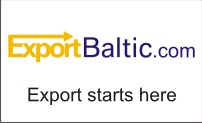Analytics, Banks, Financial Services, Latvia
International Internet Magazine. Baltic States news & analytics
Tuesday, 08.07.2025, 10:32
Overhaul of Latvia's financial sector supervision continues in the pandemic
 Print version
Print versionThe Coronavirus Disease (COVID-19) and its associated health
and economic crisis has shifted attention towards the health, social and
economic crisis response. Major bank lenders have introduced schemes allowing
their customers experiencing temporary financial difficulty to defer their
principal loan payments, and the government has offered support to the banks
via loan guarantees. These domestically focused banks arrived to the crisis
with strong fundamentals. Yet, the pandemic adds to existing challenges for
banks that previously focused on foreign clients and are now transitioning
towards new business models. Latvia's Financial Intelligence Unit (FIU)
highlights that the crisis environment could encourage criminals to exploit the
current situation for financial gain, and the risk of cyber-crime and
suspicious activity could increase during the COVID-19 pandemic1.
However, Latvia's FIU has made clear its commitment to
continue monitoring suspicious transactions, and DBRS Morningstar expects
continued improvement in the area of anti-money laundering, combating the
financing of terrorist, and proliferation financing (AML/CFT/CPF). Latvia's
financial sector regulator (FCMC) has developed strict procedures for
determining ML/TF/PF risk levels at Latvian banks and will individually
supervise financial market participants to mitigate possible adverse effects of
the crisis.
This commentary aims to assess the consequences of the
crisis on the banking sector, highlight the measurable progress made by the
Latvian authorities prior to the crisis in the areas of risk mitigation and
risk monitoring of banks that service foreign clients, and assess plans for
further progress in the coming years.
COVID-19 shock will affect Latvia's segmented banking system in different ways
By way of background, the Latvian banking system is made up
of two groups of banks with traditionally distinct business models. First,
subsidiaries and branches of banks from the European Economic Area, mostly from
Nordic countries, that focus on Latvian clients. Second, non-resident deposit
(NRD) banks that service foreign clients.
Subsidiaries and
branches of Nordic banks
The majority of domestic lending stems from three large
banks: Swedbank, SEB, and Luminor Latvia Branch (previously DNB and Nordea).
Overall risk to the Latvian financial sector from these banks was limited prior
to the COVID shock. At the end of 2019, these largest credit institutions were
profitable, well capitalized, and had high quality of loans. Nonperforming
loans to total loans declined to 5.0% in 2019, according to the IMF.
While banking financials will inevitably be affected by the
COVID-19 crisis, the short-term negative effects of the crisis have been
mitigated in large part by government support to households and businesses. The
moratorium on principal payments of loans to households and non-financial
corporations (up to 12 and 6 months, respectively) has kept non-performing
loans low, at 5.4% as of June 2020, according to the FCMC2
Non-resident deposit
banks
A challenge for Latvia in recent years has been the lack of
transparency of the origins and usage of the non-resident deposits. In 2016,
Latvia began amending laws to tighten AML/CFT/CPF requirements. Those efforts
were accelerated in 2018, after the financial sector was shaken by the
statement of the US Financial Crimes Enforcement Network (FinCEN) regarding
ABLV Bank and its subsequent self-liquidation. In 2019, a separate NRD bank,
PNB Banka, lost its banking license after it failed to raise additional capital
to continue the process of changing its business model.
DBRS Morningstar considers the COVID-19 crisis ought not to
divert attention from progress made on financial crime. Prior to the crisis the
government implemented various AML/CFT/CPF measures and procedures to
strengthen risk monitoring and mitigation of NRD banks. Below are several
indicators meant to measure the progress.
Risk Mitigation:
reduction of high-risk customers and increase in penalties
Recent legislation forced banks servicing foreign clients to
find a viable alternative to their business model, causing NRD banks to scale
back their operations. The business volume of NRD banks and their deposit base
have shrunk significantly. In 2015, over 50% of deposits in the total Latvian
financial system were from nonresidents. By 2019, foreign client deposits
declined below 20%.
Perhaps more importantly, there has been a compositional
change of NRDs remaining in the Latvian banking system. Deposits from EU
countries now represent most of the NRDs. Foreign deposits from customers based
in non-EU jurisdictions - considered more likely to pose ML/TF/PF risks -
amounted to 35% in 2015 (See Exhibit 1). By 2019 and underscoring a dramatic
shift, foreign deposits from customers based in non-EU jurisdictions (CIS and
Other Countries in the Exhibits) constituted roughly 6% of total customer
deposits (See Exhibit 2).

Risk is also mitigated by the increase in on-sight
inspections and the increased propensity of bank fines and seized assets. All
banks have undergone money laundering risk assessment, and 17 fines worth 18.7 mln
EUR were imposed on penalized banks from 2016 to 2019. In the first three
months of 2020 alone, the FIU froze EUR 160 mln in assets.
Risk Monitoring:
upskilling of regulatory personnel and IT solutions
Monitoring procedures have been improved in various ways. To
begin, Latvia has increased the staff dedicated to financial supervision. The
number of FCMC compliance control staff in the area of AML/CFT/CPF has
increased from only 6 employees in 2015 to 28 in 2019 (See Exhibit 4). The
growing staff has allowed for an increase in on-site inspections. In 2018 and
2019 all high risk banks were subjected to the FCMC on-site inspection,
previously a less frequent occurrence.
The number of prosecutors participating in specialized
anti-money laundering training has also increased in recent years. In 2019, 330
prosecutors participated in various AML training schemes, up from 193 in 2018.
The increased number and upskilling of the staff promoted more effective
dialogue between the regulator, the financial sector, and law enforcement
bodies – allowing for cross-border dissemination of suspicious transactions. As
a result, 59 criminal cases were brought before the court in 2019, up from 23
in 2018 and 10 in 2017.
The FCMC has also implemented information technology
solutions that analyze unusual cash flows to help increase the efficiency of
monitoring AML/CFT/CPF risk. Due to the improved IT tools and the larger FCMC
staff, the number of reports on unusual transactions increased to 25,170 in 20183, nearly a threefold increase from the year
earlier (See Exhibit 5).

The difficult work of
overhauling Latvia's banking sector is far from complete
Many banking sector challenges remain, including (1)
strengthening the capacity of law enforcement authorities to handle money
laundering cases and (2) managing the transition of NRD banks to new business
models.
In its 2020 semester country report, the European Commission
(EC) states that Latvia should strengthen beyond the initial gains the dialogue
between the regulators, financial sector participants, and law enforcement
bodies. In this regard, Latvia needs more advanced training of judicial
stakeholders in order to improve the quality and effectiveness of prosecuting
money laundering cases, according to the EC.
The priority of the FCMC is to remain vigilant that NRD
banks are effectively reorienting their business models away from servicing
foreign clients. The full transition will take time and come with a cost. The
downsizing of NRD banks poses refinancing and liquidity risks at a time when
these banks have seen the quality of their foreign loan portfolio deteriorate.
Stress in the NRD sector has had limited spillovers to the domestic economy and
caused no reputational damage to banks focused on domestic clients. The stress
nonetheless does point to the scale of the challenge for Latvia in addressing
its legacy banking sector issues.
DBRS Morningstar considers favourably the speed and urgency
with which the Latvian authorities are overhauling the supervision of its
financial sector. Strengthening of the financial sector is a key driver of DBRS
Morningstar’s Latvian ratings. Visit dbrsmorningstar.com for details about DBRS
Morningstar's ratings drivers for Latvia.
- 28.01.2022 BONO aims at a billion!
- 25.01.2021 Как банкиры 90-х делили «золотую милю» в Юрмале
- 30.12.2020 Накануне 25-летия Балтийский курс/The Baltic Course уходит с рынка деловых СМИ
- 30.12.2020 On the verge of its 25th anniversary, The Baltic Course leaves business media market
- 30.12.2020 Business Education Plus предлагает анонсы бизнес-обучений в январе-феврале 2021 года
- 30.12.2020 Hotels showing strong interest in providing self-isolation service
- 29.12.2020 В Латвии вводят комендантский час, ЧС продлена до 7 февраля
- 29.12.2020 В Rietumu и в этот раз создали особые праздничные открытки и календари 2021
- 29.12.2020 Latvia to impose curfew, state of emergency to be extended until February 7
- 29.12.2020 18-19 января Наталия Сафонова проводит семинар "Управленческий учет во власти собственника"








 «The Baltic Course» Is Sold and Stays in Business!
«The Baltic Course» Is Sold and Stays in Business!

